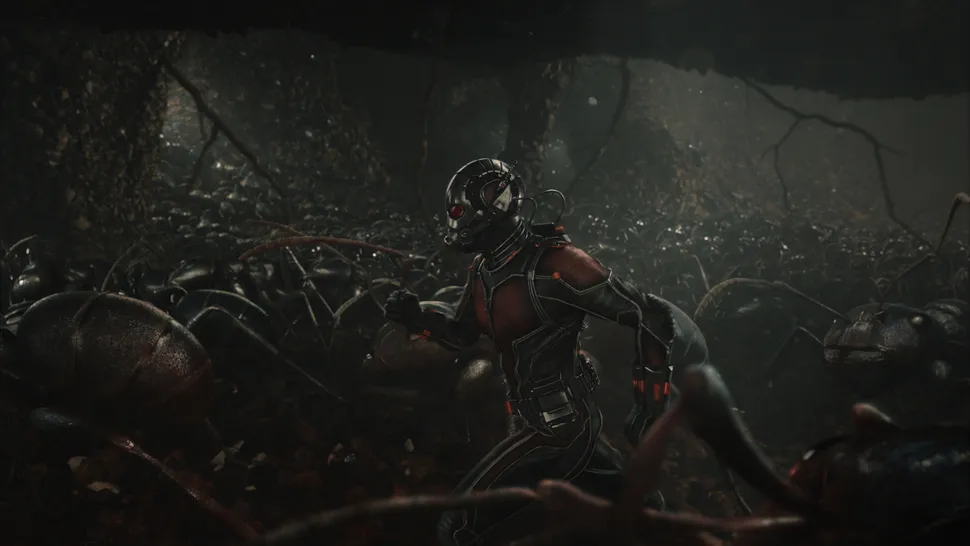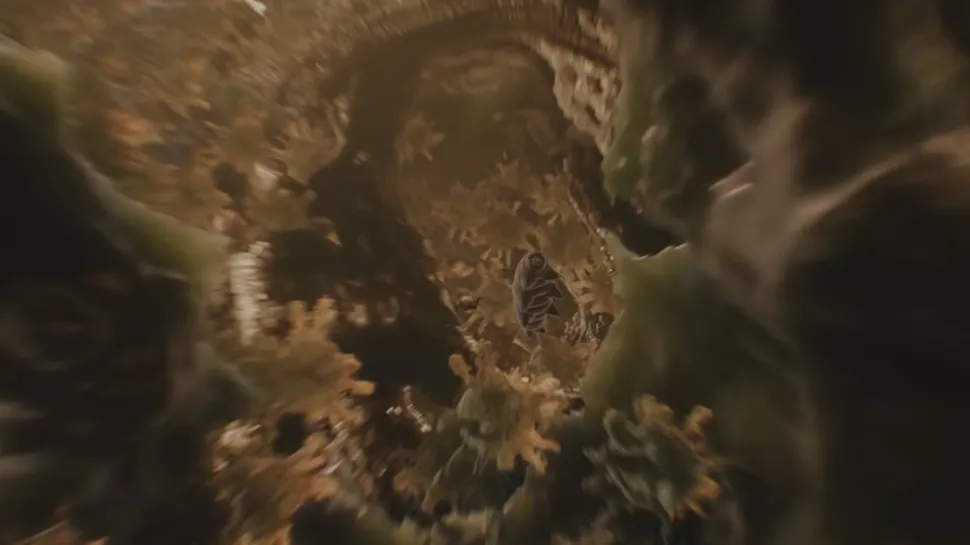How realistic is Ant-Man's quantum physics?

Wednesday, October 13, 2021 | Chimniii Desk
Highlights
Ant-Man's talent include shrinking to previously unthinkable sizes with a modified suit, commanding ant species, and being able to grow to gigantic proportions. The majority of these abilities revolve around genius scientist Hank Pym's "Pym Particle," a fictional exotic set of subatomic particles that permits an object's size and mass to be changed at will, thus circumventing the Square-Cube Law. You would weigh 0.03 g if you were the size of an ant. Later in 2019's Avengers: Endgame, the heroes use a Quantum Realm phenomenon to alter space-time and travel back in time to retrieve the Infinity Stones and save the universe. Obviously, simply shrinking very small does not result in time travel, and the technology used to develop this technique is explained away with Bruce Banner's "techno-babble," which involves a connection between the use of Pym Particles and a specialised machine to alter space-time around them as they shrink.
Advertisement
The Ant-Man films have introduced a more in-depth investigation of quantum science into the Marvel Cinematic Universe, but how realistic is it?
Marvel's Ant-Man, which debuted in 2015 with Paul Rudd as the titular shrinking superhero, added some additional science-driven powers to the Marvel Cinematic Universe. Ant-Man's talent include shrinking to previously unthinkable sizes with a modified suit, commanding ant species, and being able to grow to gigantic proportions. The majority of these abilities revolve around genius scientist Hank Pym's "Pym Particle," a fictional exotic set of subatomic particles that permits an object's size and mass to be changed at will, thus circumventing the Square-Cube Law. What are the chances of any of this happening?
Being reduced down to an impossibly small size, as seen in this video by Vsauce3 featuring Paul Rudd and Jake Roper, offers a slew of issues. To begin with, your body's density (if maintained while shrinking) would be so high that it would just collapse in on itself owing to massive pressure. Obviously, the Pym Particle's capacity to sustain the structure of a body shrank down to unimaginable sizes solves this difficulty.
Advertisement
The Ant-Man suit and devices that imbue Pym Particles into anything the hockey puck-like gadget attaches to allow objects to be instantly altered in size without fear of injury or violation of the Square-Cube Law: a physics principle discovered by Galileo Galilei that states that when an object grows in size, its surface area increases by a squared factor while the volume increases by a cubic factor.
Furthermore, as your size decreases, the frequency of the noises you make increases substantially, with your voice emitting a wavelength of roughly 12 to 26 kHz, which is outside the range of human hearing limits. As a result, in addition to being crushed by the great weight of your body being imprisoned in such a small space, you would only be able to communicate verbally in incomprehensible peeps and squeaks. When Ant-Man shrinks, though, it appears that people can still hear him despite the ludicrous fall in size.
Advertisement

Source: Marvel Studios and Walt Disney Pictures
You would not be crushed if shrinking down to a small size also reduced your body's density accordingly. Your capacity to resist even a light breeze, on the other hand, becomes practically impossible. You would weigh 0.03 g if you were the size of an ant. A breeze of roughly 8 MPH would easily whisk you away at that weight, and a human sneeze would result in near-lethal harm with wind speeds blasting you at more than 100 MPH!
Despite this, there is a silver lining. At ant-like sizes, losing weight would substantially boost your speed. Your strides would be up to a factor of 20 faster than usual. Usain Bolt is one of the fastest humans on the planet, with a maximum speed of roughly 27 MPH. If he were the size of an ant, his top speed would be more than 540 MPH, or about 80% the speed of sound. These speeds are sometimes comparable to the speeds attained by the Ant-Man and Wasp suits in the movies and books.
Unfortunately, there is also another disadvantage. At these sizes, your metabolism would increase to the point where a human would need to consume food for energy at a near-constant rate merely to sustain body heat and sustenance. So, even if you could sprint at superhuman speeds, you'd most likely starve to death.
Advertisement

Source: Marvel Studios and Walt Disney Pictures
The introduction of the Quantum Realm, or the realm between realities, is another fantasy element in Ant-Man. First seen in 2015's Ant-Man, when Scott Lang, the suit's second wearer, removes the suit's limiter to shrink down to a size that exceeds a safe limit for the Pym Particle to maintain (which is smaller than even the size of atoms). Scott is flying through the air adjacent to dust particles bigger than him as he shrinks and smashes through pieces of Yellow Jacket's armour. And then constantly decreasing down to proportions where we can see tardigrades (called a water bear or moss piglet), and finally into a space where everything appears to break down to a barely discernible point. Geometry and bizarre pictures fill the screen before Scott Lang appears to be floating in a virtually pitch-black nothingness, with only blue wisps of energy lighting neighbouring pockets of space.
The depiction is actually fairly accurate for what you can see up till the space between atoms. The rough textures of dust particles and other objects floating in the air appear to be based on electron microscope photos of small particulates, which depict caves and mountain-like landscapes all around. We do see a tardigrade float by as Scott shrinks to the size of a dust particle, indicating a size of less than 5 microns. According to the majority of data, the average tardigrade is roughly 0.4 mm in size, which is significantly larger than a dust particle.
Advertisement

Source: Marvel Studios and Walt Disney Pictures
Later in 2019's Avengers: Endgame, the heroes use a Quantum Realm phenomenon to alter space-time and travel back in time to retrieve the Infinity Stones and save the universe. Obviously, simply shrinking very small does not result in time travel, and the technology used to develop this technique is explained away with Bruce Banner's "techno-babble," which involves a connection between the use of Pym Particles and a specialised machine to alter space-time around them as they shrink.
To be fair to Marvel, we've covered most of the popular theories on time travel in our is time travel possible page, and several of them would necessitate exotic particles. Pym particles are quite unusual. At this time, however, the Quantum Realm may be tied to fantasy elements of the Marvel universe, like as magic, and impossible beings that can only be described as godlike.
Overall, Ant-science Man's is a combination of imaginative components and just enough realism to be credible to the ordinary spectator. Explanations of Pym Particle technology mixed with simplified explanations of quantum mechanics and how shrinking down to such crazy sizes could work if there was ever a method to achieve it to add a touch of realism to an otherwise magical scenario. The explanations, albeit elementary, serve a great function in providing a more strict approach to an otherwise loosely used fantasy science.
The science of Ant-Man appears to hold up as long as you don't scrutinise every single detail about how the mechanics function. We don't have to scrutinise everything all the time in movies, and if it makes sense for the sake of storytelling and moves the storyline ahead, then just sit back, don't think too hard about it, and enjoy.
Advertisement